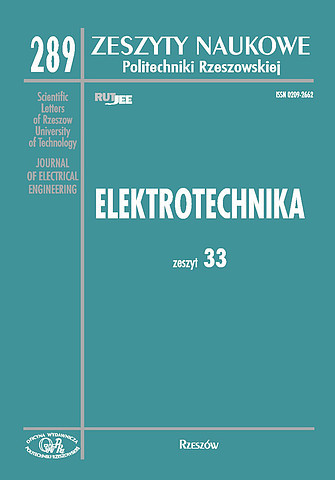Abstract
In the paper practical aspects of insulation co-ordination analyses are presented for high and ultra high voltage Gas Insulated Switchgear substations. Modeling methods are elaborated for proper selection of overvoltage protection measures, such as surge arresters, overhead lines towers grounding system, and line insulators chain lengths. The methods of lightning surges and substation equipment modeling were presented with special interest in modeling of nonlinear phenomena and high frequency characteristics, allowing for the required accuracy of the simulation results. The results for exemplary insulation co-ordination analysis are presented, showing the cable line impact on the substation overvoltages. The analysis was performed for a Single Line Diagram of an exemplary typical High Voltage GIS substation, for which a typical configuration and parameters of the elements have been assumed: overhead lines, substation apparatus, transformers and surge arresters. For the surge arresters, the analysis of the arresters reliable and efficient Energy dissipation was analyzed, which allowed for evaluation and verification of proper selection and operation of the equipment in given voltage stress conditions and the assumed substation layout. The analyses presented in the paper shows that the cable line connections within or between substations have significant impact on overvoltages, which can threaten insulation system of transformers and can also influence selection of number and location placement of the surge arresters.
References
[2] IEC TR 60071-4 Insulation co-ordination guide
[3] CIGRE WG33.0, Guide to procedure for estimating the lightning performance of transmission lines, CIGRE brochure 63, Oct. 1991.
[4] Eriksson A. J.: An Improved Electrogeometric Model for Transmission Line Shielding Analysis, IEEE Transactions on Power Delivery (Volume: 2, Issue: 3), pp. 871-886, July 1987.
[5] IEEE Modeling and System Transients Working Group, Modeling Guidelines for Fast front transients, IEEE Trans. on PD, 1996, vol. 11, p. 493-506 [6] IEC 60071-2, Insulation co-ordination, Part 2, 1996.





